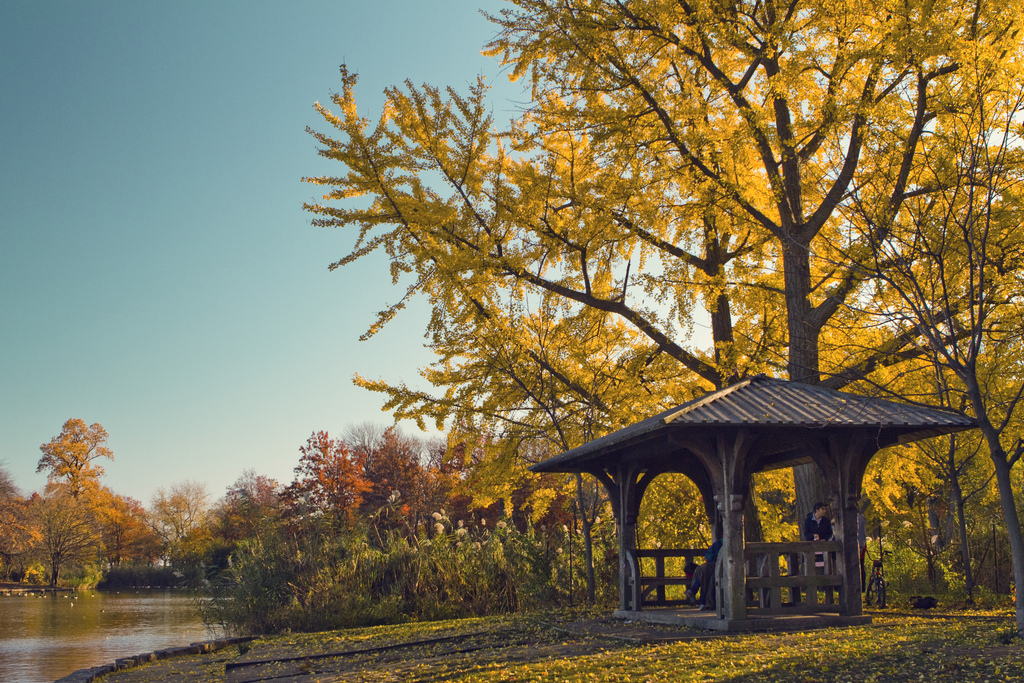Hello, Autumn! Why Fall Begins on Monday

On Monday (Sept. 22), the Earth will have nearly equal amounts of light and darkness, as summer ends and a new fall season begins. Depending where you live, the changing colors of leaves or a sudden briskness in the air may have made it seem like the seasons had already shifted, but the equinox on Monday signals the official start of autumn.
The upcoming autumnal equinox will occur at 10:29 p.m. EDT on Monday (0229 Tuesday, Sept. 23 GMT), according to the National Weather Service (NWS) Forecast Office. Sometimes the autumnal equinox falls on Sept. 23 or 24 because of irregularities in the calendar and Earth's orbit.
In addition to the autumnal equinox in late September, the Earth undergoes the vernal, or spring, equinox in March; in both cases, the Earth's axis is not tilted toward or away from the sun, NWS officials said. At those times, the lengths of day and night are almost equal across the world. [Turning Leaves: The Rich Colors of Fall Foliage]
During each equinox, the sun is exactly over the equator at noon. As the world turns, the sun's rays are refracted, or bent to make it look like the sun is above the horizon for a longer period of time, even though it is not, NWS officials said in a statement. Though this happens with every sunset, it's longer during the equinox. Also, the days last longer at places farther from the equator because the sun takes longer to rise and set.
Though the word "equinox" translates to "equal" (aequus) and "night" (nox) in Latin, the days and nights aren't precisely equal. On the equinox and the days just before and after it, the day will last roughly 12 hours and six minutes, as the sun passes directly over the equator.
As autumn progresses, higher latitudes receive fewer hours of daylight and longer nights. This seasonal change happens because of Earth's 23.5-degree tilt. The fall and winter seasons happen at those latitudes when the Northern Hemisphere is tilted away from the sun. In contrast, the Southern Hemisphere experiences spring and summer during that time because they're tilted toward the sun.
But, people living at the equator will see little difference, as those parts of the world experience less seasonal change because of the planet's tilt, the NWS said.
Sign up for the Live Science daily newsletter now
Get the world’s most fascinating discoveries delivered straight to your inbox.
The change from summer to fall can be difficult for some people. As the sun sets earlier, between 1 percent and 10 percent of the population experience seasonal affective disorder, or SAD. Symptoms include weight loss or gain, daytime sleepiness, irritability, withdrawing from friends and family, and lack of energy.
Doctors recommend that people with SAD get as much natural daylight as they can, such as going for walks during the day or sitting near windows. Exercise and connecting with family and friends can also help, as can "light therapy," or sitting near an artificial bright light. In some cases, medication can also help people cope with SAD.
But others associate autumn more with crisp walks and leaves to rake, until another seasonal shift happens, with the winter solstice on Dec. 21.
Follow Laura Geggel on Twitter @LauraGeggel and Google+. Follow Live Science @livescience, Facebook & Google+. Original article on Live Science.

Laura is the archaeology and Life's Little Mysteries editor at Live Science. She also reports on general science, including paleontology. Her work has appeared in The New York Times, Scholastic, Popular Science and Spectrum, a site on autism research. She has won multiple awards from the Society of Professional Journalists and the Washington Newspaper Publishers Association for her reporting at a weekly newspaper near Seattle. Laura holds a bachelor's degree in English literature and psychology from Washington University in St. Louis and a master's degree in science writing from NYU.









